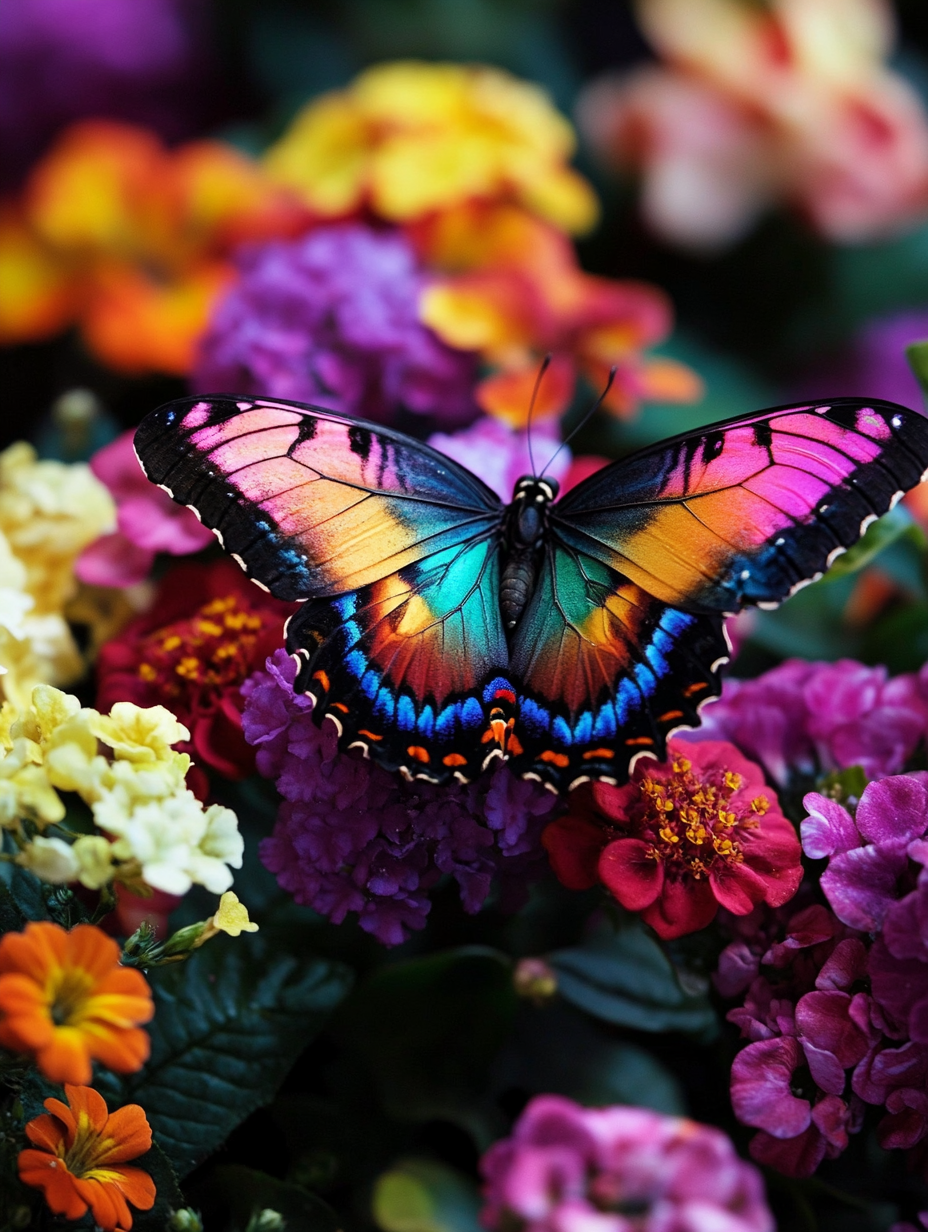Imagine the gentle flutter of colorful butterflies transforming your backyard into a living canvas. With butterfly garden seeds, you can create a vibrant haven that not only delights the senses but also supports the essential pollinators our ecosystem relies on. These seeds are your gateway to a low-maintenance, high-impact garden that brims with life and color. Whether you’re an experienced gardener or just starting, planting a butterfly garden is an enriching experience you won’t want to miss.
The Perks of Planting Butterfly Garden Seeds
Attract Pollinators
Butterfly garden seeds are designed to attract more than just butterflies. Bees, hummingbirds, and other beneficial pollinators will flock to your garden, creating a dynamic environment that supports the growth of nearby plants. Pollinators play a crucial role in maintaining biodiversity and improving crop yields.
Low-Maintenance Beauty
Unlike high-maintenance ornamental gardens, butterfly-friendly plants often thrive with minimal care. These hardy species are resilient and adapt well to various conditions, making them perfect for beginners and seasoned gardeners alike.
Environmental Impact
By planting butterfly garden seeds, you’re directly combating the decline of pollinator populations. With habitat loss on the rise, your garden can serve as a sanctuary, ensuring these essential creatures have a place to feed and reproduce.
Choosing the Right Butterfly Garden Seeds
Go Native
Native plants are the cornerstone of a thriving butterfly garden. They’re naturally adapted to your region’s climate, soil, and local pollinators, making them a reliable choice. Consult local gardening resources or experts to identify which seeds best suit your area.
Mix It Up
A good butterfly garden seed mix should include both annuals and perennials. Annuals provide immediate color and nectar, while perennials ensure that your garden remains a long-term haven for pollinators.
Choose Organic and Non-GMO Options
Organic seeds free from harmful pesticides or genetic modifications are better for the environment and the creatures your garden will support. These seeds also promote healthier soil and reduce the risk of chemical runoff.
| Seed Type | Features | Ideal For |
|---|---|---|
| Wildflower Mix | Includes various species | Beginner gardeners |
| Perennial Butterfly Mix | Long-lasting blooms year after year | Established gardens |
| Pollinator Blend | Attracts a wide range of pollinators | Enhancing biodiversity |
Planting Butterfly Garden Seeds: A Step-by-Step Guide
Preparing Your Soil
The foundation of any successful garden is healthy soil. Start by testing the pH and nutrient levels of your soil to ensure it’s optimal for planting. Clear the area of weeds, rocks, and debris, then enrich the soil with compost or organic matter to provide essential nutrients.
Planting Seeds
- Spread Seeds Evenly: Butterfly garden seeds are usually sown directly into the soil. Scatter them evenly across the prepared area.
- Lightly Cover: Gently rake over the seeds to cover them with a thin layer of soil. Avoid burying them too deeply, as many pollinator-friendly plants require light to germinate.
- Water Wisely: After planting, water the area thoroughly. Keep the soil consistently moist until germination occurs, typically within 7-14 days.
Maintaining Your Garden
- Regular Watering: While butterfly-friendly plants are often drought-tolerant, consistent watering during dry spells will keep them thriving.
- Weed Control: Mulch around the plants to suppress weeds and retain soil moisture.
- Deadheading: Removing spent blooms encourages more flowers and prolongs the blooming season.
Spotlight on Popular Butterfly Garden Plants
| Flower | Bloom Season | Pollinator Appeal |
| Milkweed | Summer | Monarch butterflies |
| Coneflower | Summer to Fall | Bees and butterflies |
| Black-eyed Susan | Summer to Fall | Various pollinators |
| Lantana | Spring to Fall | Butterflies |
These plants not only attract butterflies but also add a burst of color and texture to your garden. Milkweed, in particular, is essential for monarch butterflies, as it serves as both a nectar source and a host plant for their caterpillars.
Pairing Butterfly Garden Seeds with Other Features
To create a well-rounded butterfly habitat, consider adding complementary elements such as:
- Water Sources: A shallow dish with water and stones gives butterflies a place to rest and hydrate.
- Shelter: Include shrubs or small trees to provide shade and protection from predators.
- Pesticide-Free Practices: Avoid using chemicals that can harm butterflies and other pollinators.
Frequently Asked Questions About Butterfly Garden Seeds
Can I plant butterfly garden seeds in pots or containers?
Absolutely! Many butterfly-friendly plants thrive in containers. Ensure your pots have good drainage and receive ample sunlight. Container gardens are a great option for patios, balconies, and small spaces.
When should I plant butterfly garden seeds?
The best time to plant depends on your region. In general, spring and fall are ideal. Spring planting allows seeds to germinate as the weather warms, while fall planting gives seeds a head start for the following season.
How soon will my garden attract butterflies?
Once the flowers bloom, usually 6-8 weeks after planting, butterflies will begin to visit. The more variety you include, the greater your chances of attracting diverse pollinator species.
Do I need to replant every year?
That depends on the seed mix you choose. Many butterfly garden mixes include perennials that return year after year, while annuals will need to be replanted. A combination of both ensures continuous blooms.
Conclusion
Planting butterfly garden seeds is more than just gardening—it’s about creating a vibrant ecosystem that supports pollinators, enriches the environment, and adds unparalleled beauty to your space. With a little preparation and care, you’ll enjoy a thriving butterfly garden that brings joy and purpose to your outdoor area.

